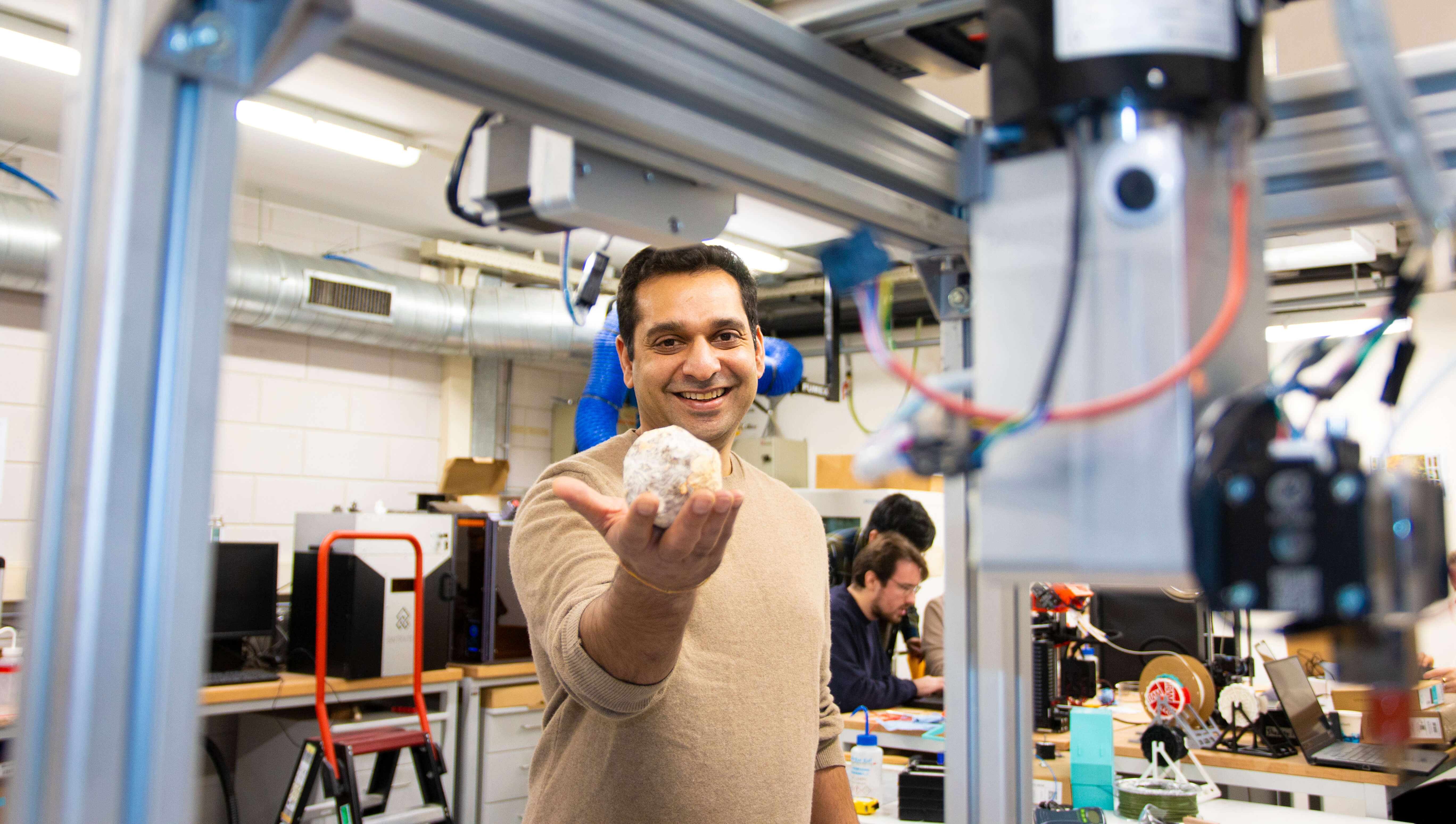Nature Materials: functional materials from 3D printed fungi
Living materials such as bone, wood or fungi have the ability to adapt to their environment. They can renew, strengthen and even heal themselves when conditions demand it. Associate Professor of Aerospace Structures and Materials Dr Kunal Masania investigates how to apply this exceptional adaptability from Nature into functional materials, for example for use in aerospace. In the article in Nature Materials, Masania and André Studart from ETH Zurich describe how they can make these living functional materials using 3D printing technology and adding a network of fungal threads.
A living and functional skin
Man-made materials degrade and cannot adapt or heal without human intervention. Biological materials, such as wood, fungi and bones, can. They adapt themselves to their environment by growing, renewing themselves and repairing damage. Associate Professor of Aerospace Structures and Materials Dr Kunal Masania and his team are investigating how to apply this adaptability of biological organisms in functional materials.
In an article in Nature Materials (December 2022), they describe their research. They used a 3D printer to print a grid-like structure from a hydrogel enriched with the fungus Ganoderma lucidum. Masania: "Fungi have evolved to grow through the gaps between soil particles. They are therefore ideal microorganisms to create structures accustomed to bridging open spaces arising from damage to rebuild their signalling networks." Like fungi on food, these fungi colonise. The metabolic activity of the living fungal colony allows the printed structure to grow autonomously and renew itself when it comes into contact with nutrients in water. In about 20 days, a living, functional skin develops from this, for example to be used for a robot or gripper arm, which is robust on the one hand and has the ability to renew itself on the other. Masania: "If you cut the skin, it grows back by itself". Future research is needed to develop sufficient fundamental understanding that such behaviours can be exploited in materials for aerospace applications.
Aviation
On 31 January 2023, the European Commission announced that Masania will be awarded an ERC Consolidator Grant for his research on living composite materials. The use of living composites can contribute to making aviation more sustainable in two ways. The new microstructures make it possible to use other, more sustainable natural materials, such as wood. But in addition, the self-repairing and adaptive ability of the materials could make stringent - and heavy - safety measures unnecessary and make for lighter aircraft.

